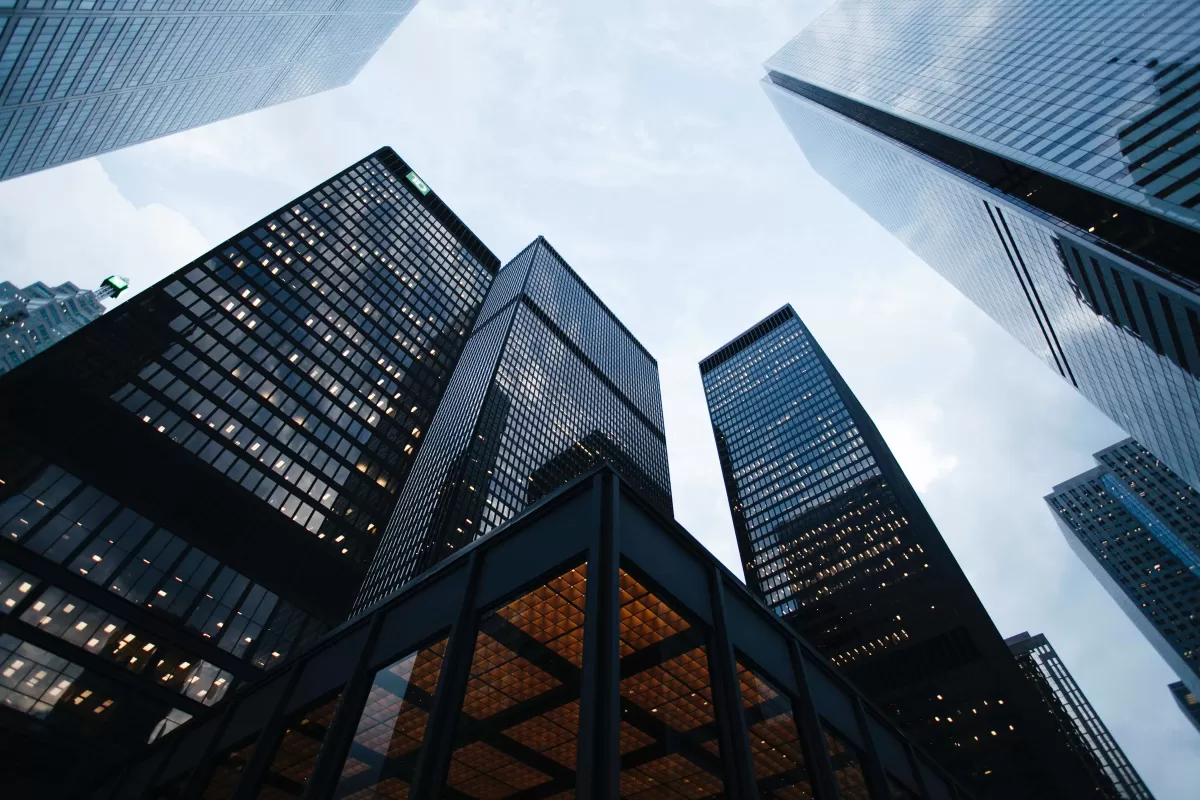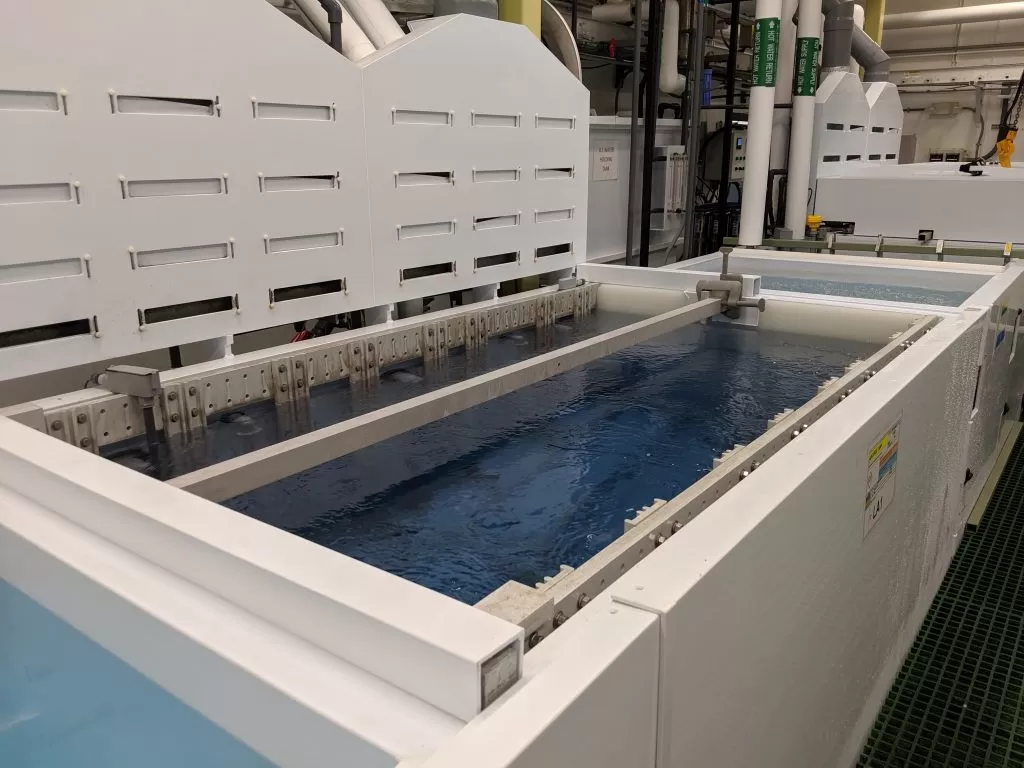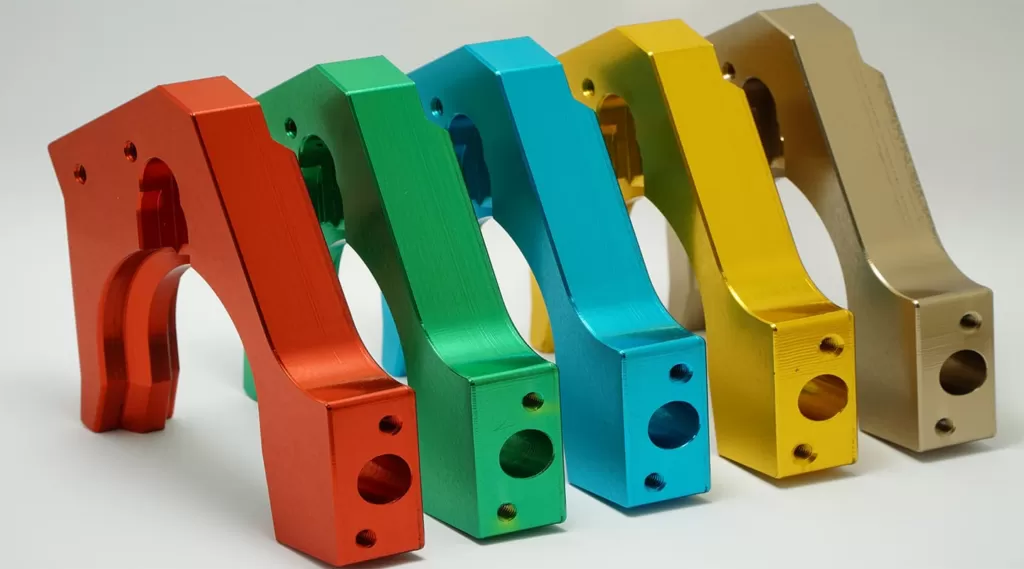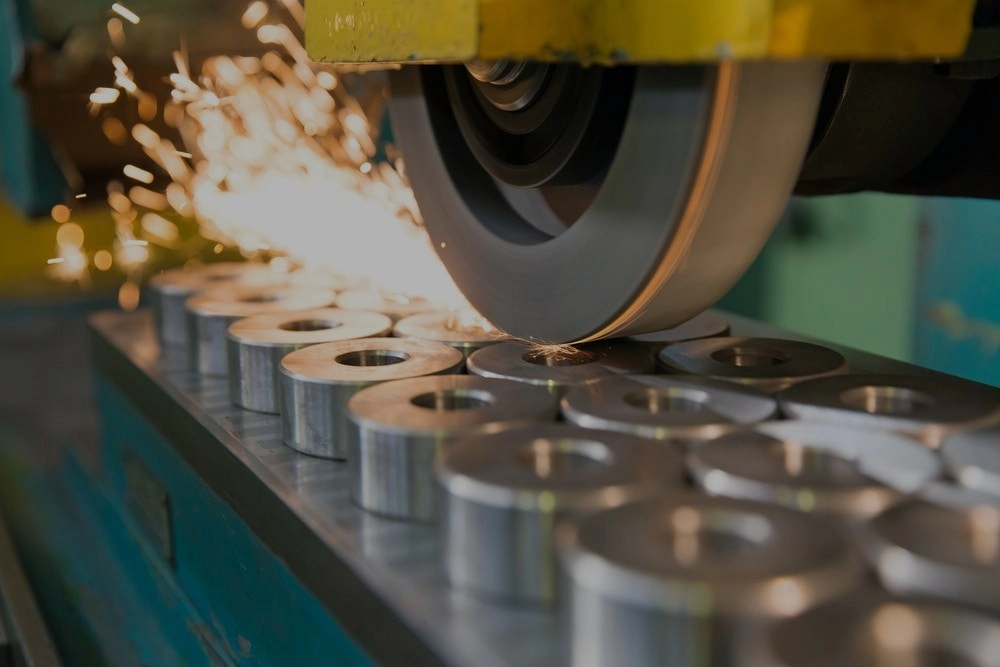Are you trying to decide between general anodizing and anti-UV anodizing for your CNC-machined aluminum parts? Choosing the right surface finish can transform your project’s durability, aesthetics, and performance.
As experts in CNC machining and surface treatments, we at HYCNC understand the stakes of picking the perfect anodizing process. With years of real-world experience, we’re here to break down the differences and help you make a smart choice.
In this guide, you’ll discover the key distinctions between general anodizing and anti-UV anodizing, their benefits, and how to select the best option for your needs—whether it’s for indoor electronics or outdoor marine components.
Let’s get started!
What Is Anodizing
Anodizing is an electrochemical process that boosts the natural oxide layer on aluminum surfaces. This enhanced layer offers stronger protection and makes aluminum more durable.
Benefits of Anodizing
- Corrosion resistance: Protects metal from rust and wear.
- Surface hardness: Makes the surface tougher and more scratch-resistant.
- Aesthetic versatility: Allows for different colors and finishes to suit design needs.
Common Applications
Anodized aluminum is widely used in various industries, including:
- CNC machining for precision parts with durable surfaces.
- Aerospace where lightweight, corrosion-resistant materials are crucial.
- Automotive components needing long-lasting finishes.
- Consumer electronics like smartphone casings and laptops.
General Anodizing Features and Applications

General anodizing is an electrochemical process where aluminum reacts with sulfuric acid to create a protective oxide layer typically between 10 and 25 micrometers thick. This layer boosts corrosion resistance and surface hardness, making it a great choice for many uses.
Key features include:
- Strong corrosion resistance, especially in indoor or low-UV settings
- Porous surface that easily absorbs dyes, offering many color options
- Cost-effective and scalable for large or small production runs
Common applications include:
- Consumer electronics like smartphone casings
- Architectural components such as window frames
- Indoor machinery and parts that don’t face harsh outdoor conditions
Limitations to keep in mind:
- Offers limited UV protection, so colors may fade when exposed to sunlight for long periods
- The oxide layer can be brittle under heavy stress or impact
General anodizing works well where durability and color variety matter most, but if outdoor UV exposure is a concern, you might want to consider anti-UV anodizing instead. For a deeper dive, check out our guide on anodizing aluminum and its uses.
Anti UV Anodizing Enhanced Protection for Harsh Environments
Anti UV anodizing uses UV-resistant additives and advanced sealing techniques to create a thicker oxide layer, typically 20 to 30 micrometers. This added thickness helps protect aluminum surfaces from the sun’s harsh rays and environmental wear.
Key features include:
- Superior UV resistance to prevent color fading and material degradation
- Improved durability for outdoor use, even in high heat or extreme weather
- A thicker, harder coating that offers better wear and abrasion resistance
Common applications:
- Outdoor furniture like benches and railings
- Marine components including boat hardware
- Solar panel frames exposed to constant sunlight
- Automotive parts that face outdoor conditions
Limitations to consider:
- Higher costs due to specialized materials and longer processing times
- Limited color options, mainly matte finishes rather than bright or glossy colors
This makes anti UV anodizing a solid choice when durability and UV protection are top priorities, especially for projects exposed to outdoor environments.
Key Differences Between General and Anti UV Anodizing
Here’s a quick breakdown to help you see the main differences between general anodizing and anti UV anodizing:
| Feature | General Anodizing | Anti UV Anodizing |
|---|---|---|
| Coating Thickness | 10-25 micrometers | 20-30 micrometers |
| UV Resistance | Limited | Superior |
| Cost | Lower | Higher |
| Applications | Indoor, low-UV environments | Outdoor, high-UV exposure |
| Color Options | Wide range, vibrant colors | Limited, mostly matte finishes |
Durability: Anti UV anodizing offers better protection against fading and wear, especially outdoors. That thicker, tougher layer makes a big difference.
Cost: Because it uses advanced sealing and UV-resistant additives, anti UV anodizing costs more and takes longer to process.
Color: Want lots of color options? General anodizing has you covered. Need durability and UV stability over colors? Anti UV anodizing works best.
This comparison helps you pick the right anodizing type based on where and how your aluminum parts will be used.
Choosing the Right Anodizing for Your CNC Project
When picking between general anodizing and anti-UV anodizing for your CNC project, consider these key factors:
- Environmental Exposure: Is your part going to be indoors or outdoors? General anodizing works well for indoor, low-UV environments. For outdoor or high-UV settings, anti-UV anodizing offers better protection against fading and corrosion.
- Aesthetic Requirements: Do you need vibrant colors or a matte finish? General anodizing allows more color options, while anti-UV anodizing typically comes with limited, often matte finishes.
- Budget: General anodizing is more cost-effective, especially for large production runs. Anti-UV anodizing, with its thicker coatings and special additives, comes at a higher price.
- Production Scale: Larger batches may benefit from the scalability of general anodizing, whereas smaller, high-value projects might justify the premium of anti-UV anodizing.
- Durability Needs: If your part will face abrasion, impact, or harsh corrosion, anti-UV anodizing provides a thicker and harder surface layer for longer life.
Case Study HYCNC Project
At HYCNC, we recently worked on solar panel frames that required outdoor durability. We recommended anti-UV anodizing to ensure long-lasting performance under constant sun exposure. For indoor electronics casings, general anodizing was the better choice, providing attractive colors and sufficient corrosion resistance without extra cost.
Our Recommendation
- Choose general anodizing for indoor projects, like smartphone casings, architectural parts, or machinery that stays out of the sun.
- Pick anti-UV anodizing for outdoor or high-UV projects including outdoor furniture, marine hardware, and automotive parts, where enhanced wear and UV protection matter.
If you’re unsure which anodizing type fits your needs, HYCNC can help tailor the right surface finish for your project. Check out our expert advice and learn more about anodizing basics to get started.
How HYCNC Ensures Quality Anodizing
At HYCNC, we combine advanced CNC processing with expert anodizing to deliver top-quality finishes. Our capabilities cover both general anodizing and anti-UV anodizing, letting us tailor the surface treatment to your specific project needs.
We focus on strict quality control to ensure every part meets specs, including:
- Precise coating thickness monitoring to guarantee durability and performance
- UV resistance testing for outdoor and high-exposure applications
- Consistent surface finish across batches for reliable results
Our team offers custom solutions, whether you need a simple corrosion-resistant finish or a tougher anti-UV coating for harsh environments. We work closely with you to match anodizing types, colors, and finishes to your unique project demands.
Ready to improve your aluminum parts with top-notch anodizing? Contact HYCNC today for a quote or consultation. We’re here to help you find the right surface treatment for durable, attractive, and long-lasting results.




